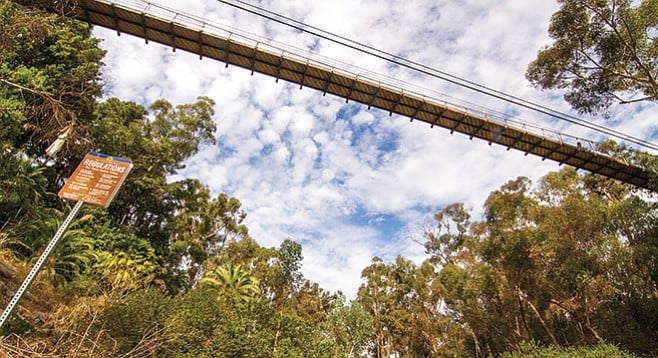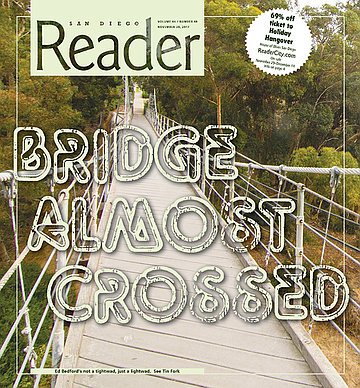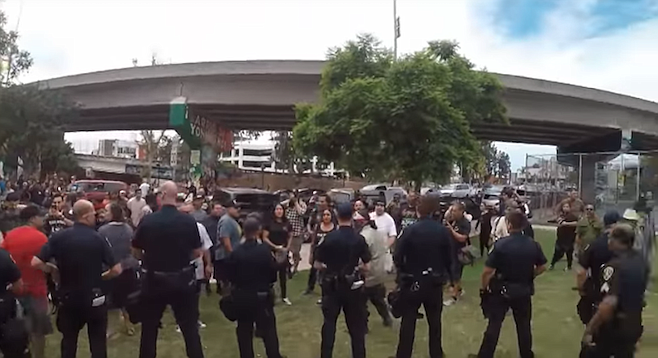 Facebook
Facebook
 X
X
 Instagram
Instagram
 TikTok
TikTok
 Youtube
Youtube


In talking about the silver-haired man he should have spoken of his “constitutional,” not his “constitution” (although I imagined it benefitted from the outing).
I am not a Chicano, and I do not adhere to the Aztlán Empire philosophy. However, this unidentified mother made an inaccurate statement. She says, “Aztlán seems to be an area that was purchased from Mexico.”
This is a lie. The United States did not purchase this land from Mexico. The United States grabbed this land under the philosophy of Manifest Destiny. Manifest Destiny was the idea that it was the destiny of the United States to own all the land from sea to sea in North America. Thus, without justification, the belligerent United States invaded Mexico and took all the land that is now the Southwest United States from Mexico.
If Mexico had sold that land to the United States, why would the United States invade Mexico, all the way to Veracruz and Mexico City? This invasion of a weaker country by the United States is not different from what Russia does to its weaker neighbors.

Is Mexico attempting to get this land back? Well, look around you. What do you see?
Furthermore, I believe that it is impertinent journalism to publish a letter when a person, in a cowardly way, withholds her name.
P.S. Mexico did sell some land to the United States. However, this a spit of land in Southern Arizona and Southern New Mexico to facilitate the building of a railroad. We know this as The Gadsden Purchase. However, this was in 1853, five years after the United States had already grabbed one-half of Mexico. In the Gadsden Purchase case, the United States made a take-or-else offer.
I would like to call a letter in to the Reader about two letters in your past two issues about reader’s feelings about Barrio Logan and Chicano Park. One was from a mother who visited the park and said there were homeless people around and that she felt threatened. Another was about “racist Latino Nazis in Barrio Logan."
I went to Chicano Park recently to see the mural that was recently created about the border wall. When I got there, I was immediately surrounded by people in beautiful native Aztec costumes. It was like a kaleidoscope of color, and they were people selling beautiful jewelry. It was almost like a window into this thousand-year culture. I’m a 69-year-old woman, and I did not feel threatened or afraid or that because I was a white person that people were looking at me the wrong way. And I take issue with people that are bashing this beautiful park.
I was a little shocked that I would read a racist propaganda piece in the San Diego Reader. I was interested and open to understanding why the author didn’t find this park to be inclusive, but the more I read the more apparent it became that they were intentionally using this platform to frame Chicano Park in a negative light.
For example, the homeless and their feces to the artwork and the people who frequent this neighborhood area really provides no context for why this place would be “divisive,” but it is an ingenious way of setting the stage for the reader — making sure that we are reading about a contemptible place.
This same strategy was employed when contrasting Military Appreciation Day to people the author deemed to be “terrorist-looking” (let’s return to this point later).
Chicano Park is a source of pride for many people, especially for residents of the area, and many people would take offense to this. I know that schools have field trips to Chicano Park. I have come out here to run my dog (and homeless people have been present and shared stories with me of their love for animals), and I’m sure the park has many other uses that enhance Barrio Logan.
I’m more appalled that you would publish this letter because the author judges people based on his/her own prejudices. The phrase “terrorist-looking aggressors” is uncalled for and definitely a display of the author’s racism. This should have been jolting to you, especially if she was talking about people (brothers, sisters, husbands, wives etc.) who regularly frequent the park.
Additionally, the author seems well-versed in mural interpretation. There seems to have been a lot of research conducted prior to this park “visit.” Or perhaps this author is a Chicano-Chicana historian? It seems really fishy to have so much knowledge about the murals and such detailed analysis after one visit. If the person did research prior to attending, then the murals shouldn’t have been shocking.
I have no problem with the author expressing their viewpoint — they don’t like how Chicanos express themselves here and especially not the use of Aztlán, the legendary ancestral home of the Aztecs (the author describes this quite differently and negatively). I think it’s beautiful that Chicano Park incorporates elements of historical myth that connote home. That to me is so welcoming, particularly when you couple it with Latino culture and how mi casa es su casa.
But I digress. I do take issue that you would allow the author to express disagreement in a way that creates hostility and divisiveness using racist descriptors and dramatizing events and features of the park that were not to their liking. This visit sounds like a fake story perfectly concocted to attempt to debase residents and people who love this park. You should have better discernment when it comes to publishing this type of anti-Latino propaganda.
What a shame. I don’t have to hide my name — please feel free to share this letter, especially with your contributor.



In talking about the silver-haired man he should have spoken of his “constitutional,” not his “constitution” (although I imagined it benefitted from the outing).
I am not a Chicano, and I do not adhere to the Aztlán Empire philosophy. However, this unidentified mother made an inaccurate statement. She says, “Aztlán seems to be an area that was purchased from Mexico.”
This is a lie. The United States did not purchase this land from Mexico. The United States grabbed this land under the philosophy of Manifest Destiny. Manifest Destiny was the idea that it was the destiny of the United States to own all the land from sea to sea in North America. Thus, without justification, the belligerent United States invaded Mexico and took all the land that is now the Southwest United States from Mexico.
If Mexico had sold that land to the United States, why would the United States invade Mexico, all the way to Veracruz and Mexico City? This invasion of a weaker country by the United States is not different from what Russia does to its weaker neighbors.

Is Mexico attempting to get this land back? Well, look around you. What do you see?
Furthermore, I believe that it is impertinent journalism to publish a letter when a person, in a cowardly way, withholds her name.
P.S. Mexico did sell some land to the United States. However, this a spit of land in Southern Arizona and Southern New Mexico to facilitate the building of a railroad. We know this as The Gadsden Purchase. However, this was in 1853, five years after the United States had already grabbed one-half of Mexico. In the Gadsden Purchase case, the United States made a take-or-else offer.
I would like to call a letter in to the Reader about two letters in your past two issues about reader’s feelings about Barrio Logan and Chicano Park. One was from a mother who visited the park and said there were homeless people around and that she felt threatened. Another was about “racist Latino Nazis in Barrio Logan."
I went to Chicano Park recently to see the mural that was recently created about the border wall. When I got there, I was immediately surrounded by people in beautiful native Aztec costumes. It was like a kaleidoscope of color, and they were people selling beautiful jewelry. It was almost like a window into this thousand-year culture. I’m a 69-year-old woman, and I did not feel threatened or afraid or that because I was a white person that people were looking at me the wrong way. And I take issue with people that are bashing this beautiful park.
I was a little shocked that I would read a racist propaganda piece in the San Diego Reader. I was interested and open to understanding why the author didn’t find this park to be inclusive, but the more I read the more apparent it became that they were intentionally using this platform to frame Chicano Park in a negative light.
For example, the homeless and their feces to the artwork and the people who frequent this neighborhood area really provides no context for why this place would be “divisive,” but it is an ingenious way of setting the stage for the reader — making sure that we are reading about a contemptible place.
This same strategy was employed when contrasting Military Appreciation Day to people the author deemed to be “terrorist-looking” (let’s return to this point later).
Chicano Park is a source of pride for many people, especially for residents of the area, and many people would take offense to this. I know that schools have field trips to Chicano Park. I have come out here to run my dog (and homeless people have been present and shared stories with me of their love for animals), and I’m sure the park has many other uses that enhance Barrio Logan.
I’m more appalled that you would publish this letter because the author judges people based on his/her own prejudices. The phrase “terrorist-looking aggressors” is uncalled for and definitely a display of the author’s racism. This should have been jolting to you, especially if she was talking about people (brothers, sisters, husbands, wives etc.) who regularly frequent the park.
Additionally, the author seems well-versed in mural interpretation. There seems to have been a lot of research conducted prior to this park “visit.” Or perhaps this author is a Chicano-Chicana historian? It seems really fishy to have so much knowledge about the murals and such detailed analysis after one visit. If the person did research prior to attending, then the murals shouldn’t have been shocking.
I have no problem with the author expressing their viewpoint — they don’t like how Chicanos express themselves here and especially not the use of Aztlán, the legendary ancestral home of the Aztecs (the author describes this quite differently and negatively). I think it’s beautiful that Chicano Park incorporates elements of historical myth that connote home. That to me is so welcoming, particularly when you couple it with Latino culture and how mi casa es su casa.
But I digress. I do take issue that you would allow the author to express disagreement in a way that creates hostility and divisiveness using racist descriptors and dramatizing events and features of the park that were not to their liking. This visit sounds like a fake story perfectly concocted to attempt to debase residents and people who love this park. You should have better discernment when it comes to publishing this type of anti-Latino propaganda.
What a shame. I don’t have to hide my name — please feel free to share this letter, especially with your contributor.